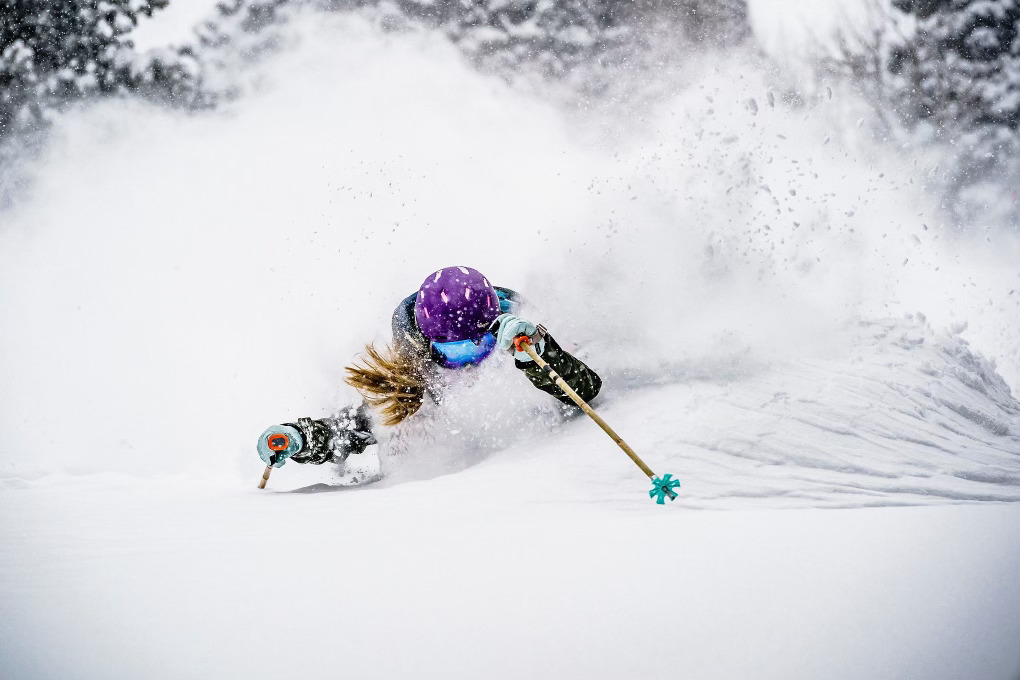Passion.
Passion is a word that has steered and transformed High Five Athlete Louis Arevalo’s life. The Colorado native has spent the majority of his life traveling around the world, following his passion for being behind a camera.
In 2020 when a backcountry ski accident broke his back and left him paralyzed his life was forever changed. But, although there were a lot of changes to overcome, the passion that Louis used to fuel his life was undampened.
We asked Louis for some insight into what he does, some of the challenges he has to deal with, and how he kept his passion for photography in the midst of a life-changing injury
When in life did you discover your passion for taking pictures? How did you discover it?
In elementary school, I sent away for a micro 110 film camera and began making snapshots of friends and family.
Pre-Injury, where was the craziest place that photography took you
Shooting from a paraglider in the Issyk Kul Region of Kyrgyzstan during the first ever freeride ski competition in Central Asia.

How was the transition from shooting able-bodied to not? Did you ever have to find your passion again after your injury?
It’s been a fairly quick transition. I had my first shoot within three months of my injury. I hired second shooters on the first few jobs to ensure we got the shots needed and in case I ran out of energy. Never happened, but my energy levels were significantly reduced and only recently began to rebound to an acceptable level.
What are the biggest challenges that a disabled photographer has to overcome?
I will list two challenges that I found most difficult. First, having very little trunk control or perhaps no control at all due to the level of my SCI, that makes handling the equipment challenging. From lifting, holding, carrying, stabilizing, in particular when we use larger lenses. On top of that if I need to move my position to either reframe the composition or change the angle I need both hands and arms to move. So no movement while keeping the camera up to my eye. Second, not being able to access the terrain that was once so easy to get too. No more stepping off a curb, standing on a ladder, leaving the trail, climbing a tree, climbing in general, going off trail pretty much anywhere, getting into a house, building, etc. That is just two. I also believe there is a reluctance in clients to trust that I can get the job done. 80% of my repeat clients have not contacted me since my accident… When new clients reach out and they didn’t realize my status as a person in a wheelchair there is a definite hesitation…


What would you tell anyone who was is newly injured and maybe feels that they have lost their passion? (Both physically and mentally)
Hmmm. I don’t believe I have any advice for those who have lost their passion. I have definitely met people who have had similar injuries and recoveries who, for their own reasons, left their professions/past times/passions behind. I too have left certain things in the “I don’t do that anymore” box.
Waking up in the hospital the morning after my accident, heli rescue, and emergency surgery, was like waking from a dream. The tunnel vision that widened to the hospital room with people I loved surrounding me. The events of the previous day and night slowly came back along with knowing I was paralyzed. I did a quick overview of the types of work I would not be able to do as easily – climbing, skiing, trekking – followed by the things I would still be able to do – video, editing, travel, lifestyle, aerial, and portraits. I was certain those would be enough to keep me busy and feeling productive.
What are your personal favorite photos you have taken?
My favorite photographs are usually those ones we just made. New, shiny, fresh.

-Louis Arevalo High Fives Athlete #306
Louis, you have inspired us with your passion to find a way to continue to pursue your dreams. We applaud your heart, commitment, and resistance. Way to be.
If you would like to see or purchase more of Louis work check out his website here




More photos from Louis!







